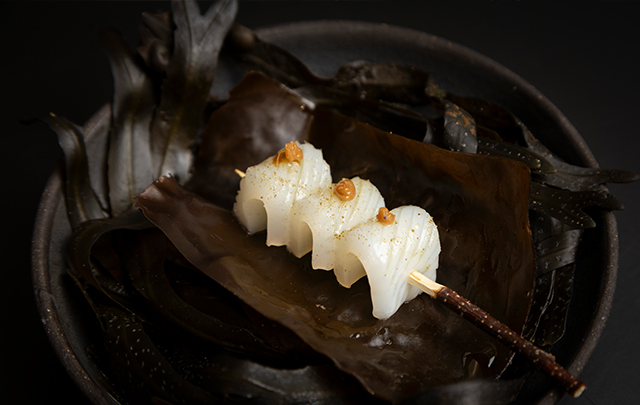News
A hundred ingredients in one dish, for a different flavour in every bite

Nicolai Nørregaard, chef at the Kadeau restaurant, shows how nouvelle Nordic cuisine is consolidating itself with local produce, preserves, and the apparent simplicity of very complex dishes
Figs, berries, blackberries, lavender, fig and cherry leaves, hazelnuts, quince, pine buds, spruce blossoms, blueberries, currants, magnolia, unripe berries, cedar leaves, rose buds, black walnuts, apricots, rhubarb... the list of ingredients that Nicolai Nørregaard prepares at his home in Copenhagen (Denmark), is long. "A typical Kadeau dish has a lot of ingredients. The idea is that they are very complex but look simple", says Nørregaard at Madrid Fusión Alimentos de España. "Because at first glance you don't see what's inside, it's surprising”.
The most surprising thing about Nørregaard, a representative of the Nordic cuisine that emerged a few decades ago, is his adherence to the dogma of proximity. He uses only what is close to him, such as caviar, salmon, oysters, crabs, and other animals that he takes from the waters of Bornholm, a Danish island in the Baltic Sea, where the other site of his restaurant is located, and where he has a vegetable garden from which he takes the raw materials for his recipes.
"We opened Kadeau 17 years ago on the island of Bornholm, which is a long way from the rest of Denmark", explains Nørregaard. "Everything is colder there than inland. Spring comes two or three weeks later, and summer lasts until later. There, we can grow and ripen different fruits, such as figs, berries and blackberries, which are part of our cuisine and have been preserved for thousands of years. In the north of the north, the winters are very long, very cold, and there is a long tradition of canning.
As the grandson and son of people who had gardens and were used to preserving their produce for year-round use, Nørregaard wanted to bring that Baltic nature to Copenhagen, to "bask in Bornholm's nature even in winter", he says. "We went into the world of canning, but away from tradition. We work a lot with different varieties and new ingredients. We make ten tonnes of preserves a year from different products that are not on the menu at the same time. There are also about 25 different flavoured oils on the list. "It is a fantastic way of preserving flavour. It's always there, even if we don't say so".
The dishes prepared on the Madrid’s stage also use pine and fir blossoms, green, or ripe, served raw in season or preserved the rest of the year. For example, in a "sandwich" with salted cherry leaves. "When the cherry blossoms are in bloom, the young leaves are salted and frozen. All these ingredients are combined: cranberries, fried herbs, hazelnuts, cherry blossoms, crusty bread, ham, and the skins of various berries, such as currants. "We started this Nordic cuisine movement when social media came out, and it became easily known in the world", says the chef about the naming of his food. "It was a natural journey. Nordic cuisine was very different from what it is now, and it has evolved with the rest of the world. Inspiration goes back and forth with other countries, and it's already global".
Another dish that embodies Nørregaard's philosophy in its purest form is a "squid powdered with seeds and magnolia oil, which has ginger-flavoured sprouts, with seaweed salt", served alongside razor clams made with sautéed green berries and cedar leaves, which have been vacuum-salted to give them "a strong and very aromatic flavour". It is served with blueberries and fermented seeds, "which taste peppery", Nørregaard concludes. "You put them between the bites and you get a different savoury flavour with every bite.
On the menu presented by the Kadeau chef, the final dish is an "example of new techniques for preserving". Fruits such as apricot, peach, pear, and Japanese quince, are preserved to preserve their texture. But also rhubarb, which is first steamed and dried, then placed in jars with honey. "The final product has a chewy texture that preserves all the flavours. It is slightly sweet with the acidic touch that we find in natural rhubarb". This is also served with preserved late July black walnuts, with cucumber, fennel and blackcurrant leaf. All on fig leaf, "which is very important to us", and drizzled with cream.
